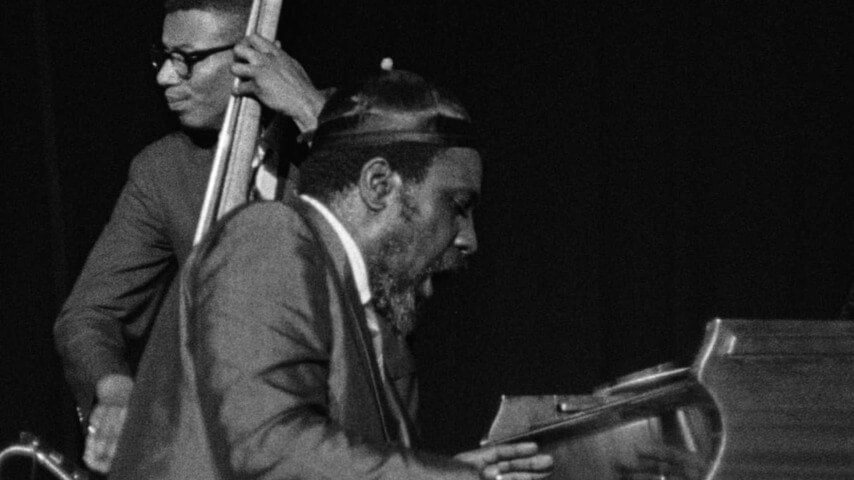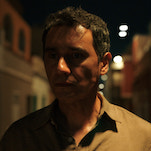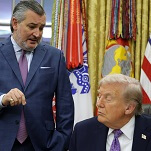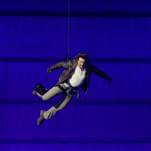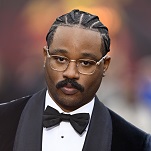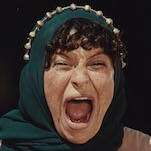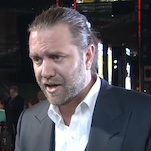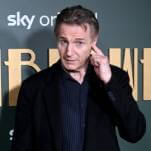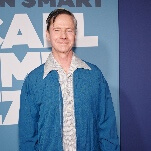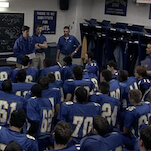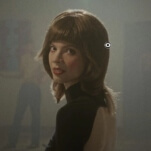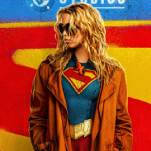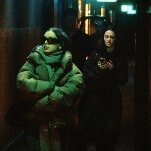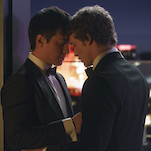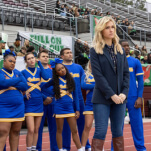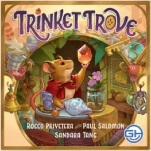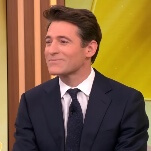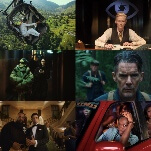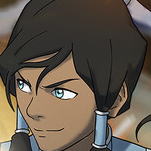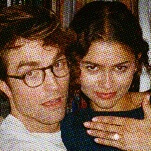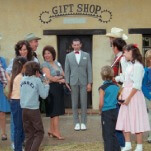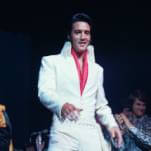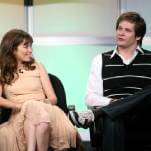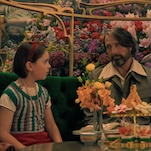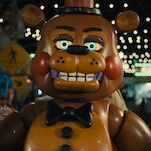In Cult Of Criterion, The A.V. Club highlights a new release from The Criterion Collection each month, examining the films entering an increasingly accessible film canon.
One of America’s great jazz documentaries was mostly shot for West German TV and funded by Clint Eastwood. The 1988 doc Thelonious Monk: Straight, No Chaser grew out of 20-year-old recordings and footage—once referred to as “the Dead Sea Scrolls of jazz”—shot by Christian and Michael Blackwood over the course of six months for a public access special that aired exactly once in a country that no longer exists. Rescued by an enterprising producer, a pioneer of direct cinema, and the Man With No Name himself, these tapes were supplemented by new interviews, narration, and other archival materials to better reveal a musician who was, at the time, in the middle of a posthumous career reappraisal. Both jittery in its live-wire energy and elegiac in its knowledge that the generational pianist who served as its eccentric, humming generator had finally shut down, Thelonious Monk: Straight, No Chaser jams a lifetime of personality into 89 minutes of music and meandering backstage riffing.
As incredible as some of Blackwoods’ concert and tour footage is, Thelonious Monk: Straight, No Chaser was arranged into its evocative final form by director Charlotte Zwerin, who edited and co-directed Albert and David Maysles docs like Salesman and Gimme Shelter after meeting them while working at Drew Associates (Primary) in the ’60s. Here, Zwerin follows the lead of the Blackwoods. She keeps herself out of the film, simply arranging the songs, rehearsals, recordings, and patter into a sequence that captures the kind of transportive honesty valued by Zwerin and her direct cinema peers.
Criterion booklet essayist Paul Grimstad (who has also composed for films of the NYC indie scene like Thirst Street, Heaven Knows What, and Frownland) likens this unorthodox production to something of a jazz recording: An artist messing around with raw material until “some interesting shapes, an expressive pattern, a rhythm” of their own starts to form from the elemental chaos. Zwerin was blessed with some killer footage, but her final product shares a staccato sensibility with Monk’s playing. It pounds the viewer percussively, persuasively, as it hammers home what it was like to witness Monk and his ensembles perform.
Monk, wearing a series of dope hats that make him look alternatively like a recent graduate and a Flintstones Grand Poobah, is shot in close-up, a focus on his hands slapping the keys like Bugs Bunny on a typewriter. The music is so intimately recorded that you can hear Monk and his bandmates humming along to their improvisations. One gets the sense of a musician’s musician—a bopper’s bopper—as complex, stumbling dissonance slides into a spotlessly clean run up and down the piano. Though the title track is never played over the course of the film, songs like “‘Round Midnight” and “Well, You Needn’t” demonstrate the kind of impishness reflected when Monk is off-stage.
The clashing, wrong-on-purpose tonal and rhythmic playfulness that made Monk’s virtuosity unique comes out in the personal, behind-the-scenes moments too. Monk is sarcastic, goofy (he calls a pair of striped pants some “bad motherfuckers”), and breezily cool. His mannerisms feel influential to how all sorts of actors have played musicians, like Wendell Pierce’s charmingly knockabout trombonist in Treme.
But there’s an unguardedness there too. He’s either energized—smoking, spinning, joking in his quiet mumble—or aloof and silent. At one point he’s motionless, in bed under the covers, trying to order food from a concierge struggling with a language barrier. His son T. S. Monk directly confronts these two sides of his personality in an interview, pointing towards some kind of long-term mental illness that had his father (who would sometimes fail to recognize him) in and out of institutions.
But the film doesn’t try to diagnose. It just observes, and considers. Like the wryly standoffish moments between Bob Dylan, his friends, and press members in Dont Look Back, Monk’s non-performing presence in this film is difficult and ambiguous, yet revealing. His bandmates are clearly confused by him at times, while he’s frustrated by his producers and players at others. The people he seems closest to in the film seem to be those he was closest to in life: His wife Nellie and his patron/companion Pannonica de Koenigswarter, a Rothschild heiress whose devotion to jazz (and those who played it) once landed her in prison after taking the rap for Monk on a marijuana charge in the late ’50s. It’s not lost on the audience that Monk wrote songs for both women, “Crepuscule With Nellie” and “Pannonica.”
The clarity with which the film captures both the music and the man contributes to a vision of a complex whole that feels representative. Yes, Monk was recently back in cinematic nonfiction thanks to Alain Gomis’ experimental film Rewind & Play, a document of casual and unrelenting racism as the jazz legend is dehumanized on French TV. That film has its purpose, but it’s just one case study, one moment in a life. What made the footage in Thelonious Monk: Straight, No Chaser worth saving is that it combines so many small moments into a cohesive portrait of a person, like a series of notes forming an irregular yet undeniable chord.
